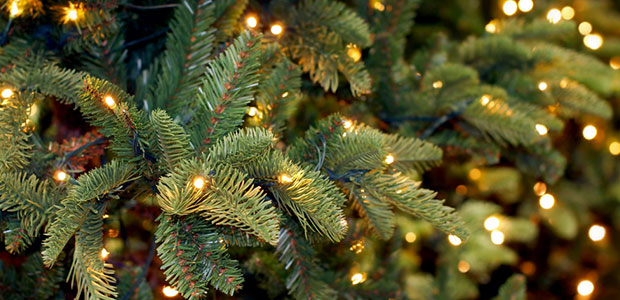
A Top Holiday Hazard: Your Christmas Tree
It’s easy to get caught up in the holiday spirit and excitement—but let’s not forget the risks that come with decorations, house lights, Christmas trees, and winter weather.
At this point, the holiday season is up and rolling. House holiday lights are going up, shoppers are busy bees, and people are setting up Christmas trees and other festive decorations to get in the spirit. However, all of these things come with their own safety risks, so it’s important to be aware of potential hazards. No one wants a Christmas that goes up in flames.
In fact, the last thing you probably want this holiday season is a house fire caused by unsafe lights, a dry Christmas tree, or a tipped candle. According to The Sentinel-Record, house fires during the holiday season are more frequent, more costly, and more deadly than at any other time of the year. The U.S. Fire Administration notes that open-flame fires on Christmas day is more than double the average.
And sadly, it doesn’t stop at tree flames. Reports show that the number of fatalities during a holiday fire is almost 70 percent higher than average, and property loss is 34 percent greater.
These numbers are not surprising given the number of Christmas trees, strings of lights, and candles being used in homes this time of year. Christmas trees can be “almost explosive” if they catch on fire. Dehydrated trees with dysfunctional lights are a recipe for disaster, and one spark on a tree can make the entire structure go up in flames within minutes. With a massive burning tree, it doesn’t take long for the fire to spread across the room and other parts of the house, putting everyone in danger.
What with 20 percent of families who put up Christmas trees preferring live ones, the following tips are helpful in mitigating potential holiday risk:
Buy trees fresh, with needles intact. It’s important to get a fresh cut on the trunk to encourage water to uptake through the trunk. Check your tree’s water supply daily and replenish it often to avoid brittle, dry branches. Bear in mind that no matter how well-watered, the tree will start to dry out after four weeks. Take it down as soon as possible after the holidays.
Keep it away from heat sources. If your tree is near a fireplace, radiator, or a burning candle, move it. It’s important that trees are kept away from heat sources, especially because one-fourth of all Christmas tree fires are caused by a heat source that’s too close.
Studies also indicated that Christmas tree fires result in death once in every 31 occurrences compared to an average one death per 144 total reported home fires. There is no doubt that Christmas trees increase risk of death if an accident happens.
Take care of tree lights. Christmas tree lights should not be overlooked. Ornaments are beautiful, but lights really give the tree its festive spirit. However, even with artificial trees, one of every three home Christmas tree fires is caused by electrical problems. Artificial trees should be flame-retardant.
It is also crucial to inspect your lights every year. Make sure there are no damaged or frayed lights. Make sure your electrical cords are intact and not cracked, and avoid broken sockets or outlets. Do not run more than three strings of lights end to end, and do not ever string together multiple extension cords.
Outdoor lights present hazards, too. Make sure you use UL-rated clips or hangers. Nails or staples can damage the wiring and increase the risk of fire. Keep the cords and lights away from snow or standing water, and avoid damage to the cord’s insulation by ensuring it is not pinched in doors or windows or placed under furniture.
Take them down post-holidays. While Christmas all-year-round sounds magical and wonderful, resist the urge to leave your lights and decorations up long after the holidays are over. Lights can be chewed up by squirrels and damaged by weather. Safety experts recommend outdoor lights be taken down within 90 days of the holidays.
Be candle-conscious. Colder days and holiday spirits mean December is peak time for home candle fires. One third of all candle fires start in the bedroom, and December sees four times as many candle fires than any other month. You should maintain a distance of at least three feet between a candle and anything flammable. Candles should sit on sturdy surfaces, and you should never leave a burning candle unattended. Keep a fire extinguisher easily accessible, and make sure smoke detectors are working.
As the holiday season continues to unveil and families and friends gather, let’s not forget the dangers associated with lights, heat, and festive decorations. For the safety of all and the preservation of holiday spirits, follow these recommendations to prevent fires in your home this winter.